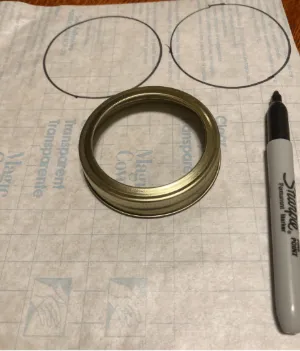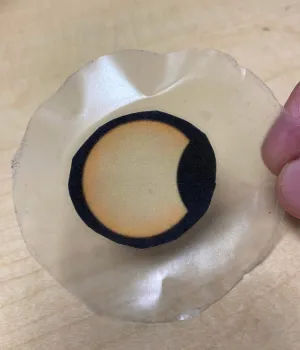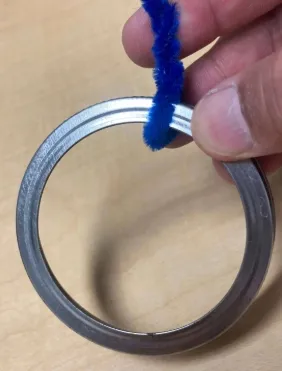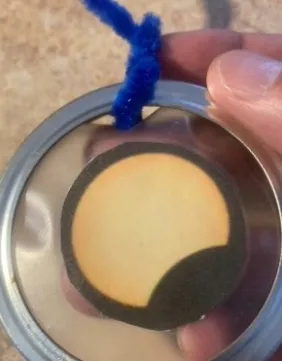Solar Eclipse Hanging Art
Make this craft to learn about the stages of a solar eclipse.
What You’ll Need:
- Contact paper
- Scissors
- Marker
- 3 Small mason jar lids
- Stick (to hang your eclipse display)
- 3 Pipe cleaners
- String/Yarn
Directions
-
Place a mason lid jar on contact paper. Trace two circles and cut them out.

-
Peel the paper off one side of a contact paper circle.
-
Cut out the first eclipse image from the Total Solar Eclipse Cutouts sheet.
-
Place the eclipse image in the center of the sticky side of the contact paper.
-
Take the 2nd contact paper circle and peel off the paper and place the sticky side over the cutout image. Now the eclipse image is covered on both sides with contact paper.

-
Use your fingers to press the contact paper down for a better seal, working from the center to the edges.
-
Take one end of a pipe cleaner and fasten it onto the lid. Tie the remaining end to a stick so that the lid hangs off of the stick.

-
Place the eclipse image in the lid that you just tied.

-
Repeat the whole process with the other two eclipse images.
-
Take a longer piece of yarn or string and tie it on either end of a stick.
-
Hang your creation on a nail or hook to display your solar eclipse art!

What happens during a solar eclipse?
A solar eclipse occurs when the Moon is perfectly aligned between the Sun and the Earth, creating a shadow on the Earth's surface. The Moon's shadow sweeps across the surface quickly as the Moon orbits the Earth, temporarily blocking our view of the Sun.
During a total solar eclipse, the Moon covers the Sun in stages. First contact happens when the Moon’s shadow first starts to appear, covering a small portion of the Sun. The moments right before and after totality are known as second and third contact. In both these stages, the Moon moves in position to completely cover the Sun, except for a sliver of bright light on the edge that resembles a diamond ring.
When the Moon completely blocks the view of the Sun from Earth it is called totality. During a total solar eclipse, the Sun’s outer atmosphere, called the corona, is visible from behind the edges of the Moon. After third contact, the Sun begins to reappear from behind the Moon until the final moment of the eclipse that is called the fourth contact.
When viewing an eclipse, it’s important to wear protective eyewear. NEVER look directly at the Sun during an eclipse.

Credit: NSF National Radio Astronomy Observatory